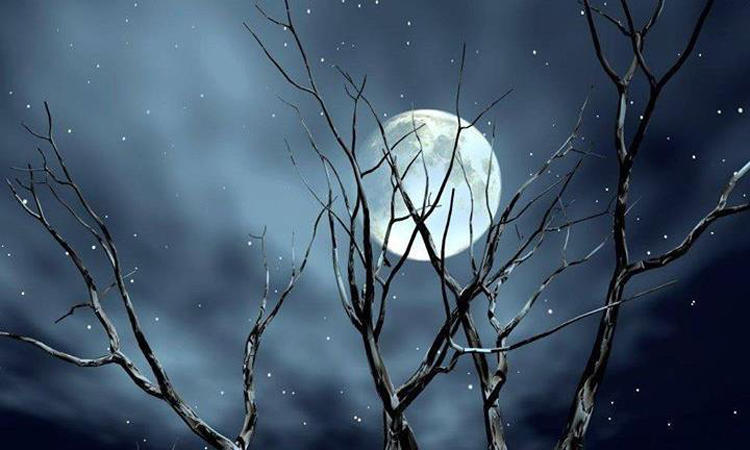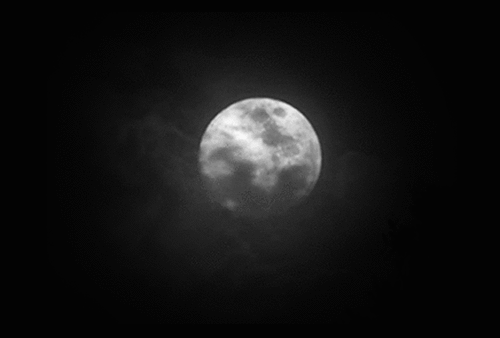

By: Emma Barhydt
Find a clear southwestern sky to see Jupiter and Saturn early in December and follow them as they slink toward the horizon through the Great Conjunction on the 21st. You’ll be able to cover them with one finger for a week around the 21st, so if the weather isn’t going to be great that day, you still have several days around closest approach to see this impressive sight. Conjunctions of the two planets occur every 19.6 years, but there hasn’t been one this close since 1623, when Galileo was still alive!
Saturn, magnitude +0.6, would be a prominent object if it wasn’t paired with ten times brighter Jupiter at -2.0. It seems dull by comparison, belying its beauty in a telescope. While Jupiter’s fantastic four (the Galilean moons) will still be visible in a telescope, Saturn’s moons will be harder to see as it gets lower and more of our atmosphere gets in the way. It’s also 20% farther away than at July’s opposition.
Early morning Venus moves closer to the horizon, while still keeping over 20 degrees from the Sun. Keep track of the magnitude -3.9 morning star and you’ll follow it into February.
Mercury passes by the Sun on the 20th. It’s only a Solar & Heliospheric Observatory object this month.
Mars is still a bright red gem high in the evening sky.
It’s getting dimmer and smaller. Details will be harder to see even in a large telescope. Watch and see if the reddish tint fades this month. Observers are seeing dust storms expanding over the planet, so the lighter colored dust may take the edge off Mars’s reddish glow.
It’s also a good time to spend some of our longer evenings on the other outer planets, Uranus and Neptune, which are highest in the evening.
The meteors from the Geminid shower come slow and furious. They peak at a meteor or two per minute (on average) on the 14th at 01:00 UT, which is 8 p.m. on the 13th our time. You might see a satisfying number of chips off of asteroid 3200 Phaethon after dark on the evening of the 13th, unlike other showers which are vastly better after midnight.
We have some comets that might be observed in binoculars this month. C/2020 M3 ATLAS (magnitude around 8) dims as it moves across Auriga from magni- tude +1.6 Elnath to magnitude 0 Capella in the even- ing sky. C/2020 S3 (Erasmus) is bright at magnitude 6-7 but sinks quickly into the morning Sun, moving across the northern part of Scorpius. It will show up in SOHO’s cameras around Christmas.
The Big Dipper starts to rise from its annual scooping up of water on the northern horizon. Cygnus, the Northern Cross, flies to the northwestern horizon, taking the Milky Way with it. Orion looks lazy, lying on his side at its rising after sunset early in December. The hunter and his menagerie are well up in the evening sky by the end of the month.
Our Winter Solstice occurs at 5:02 a.m. on the 21st.
The earliest sunsets of the year are at 4:27 p.m. EST on the 7th and the 8th, so the evenings are going to get a bit brighter with sunset ten minutes later by the end of the year. Morning darkness will last later into early January. If you want to calculate sunrise and sunset times for yourself, make a spreadsheet from the NOAA Global Monitoring Laboratory, https://www.esrl.noaa.gov/gmd/grad/solcalc/index.h tml since the US Naval Observatory site is still down for repairs.
On the 14th, a Total Solar Eclipse will occur across southern South America. We won’t even see a partial eclipse in the USA.
The brightest star to be occulted by the Moon this month will be ν Piscium on the evening of the 23rd. The magnitude +4.5 star, formerly known as 51 Ceti, will be covered up by the dark edge of 69% illuminat- ed Moon just after 10 p.m. EST.
The International Space Station, with seven souls aboard, may be visible during the evenings through the 12th, and in the mornings starting on the 17th.




